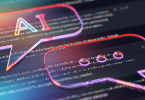IT operations and security are changing fast.
As technical architecture, requirements, and threats evolve, a wide range of new concepts and practices are emerging to meet them.
Unfortunately, these terms can be difficult to keep straight as many of these terms look and sound similar. In this blog, we will clear up any confusion around the most common of these terms, including AIOps, MLOps, DevOps, ITOps, and observability.
We will:
- Provide a high-level understanding of each term
- Highlight many of their differences
- Explore how they work together
Let’s get started.
AIOps explained
Artificial intelligence for IT operations (AIOps) uses AI to automate many IT operations. Specifically, AIOps focuses on automating the maintenance and management of IT infrastructure. This includes automating a wide range of tasks such as applying patches and updates, maintaining general IT hygiene, and investigating IT security and operational incidents.
Find out how BMC approaches AIOPs
MLOps explained
Machine learning for IT operations (MLOps) focuses on automating, simplifying, and streamlining ML models at every step of their lifecycle and improving workflows to develop, deploy, and manage them faster and easier. This includes standardizing processes, increasing visibility and collaboration, and automating DevOps tasks.
Get a deeper explanation of MLOps
DevOps explained
DevOps combines software development with IT operations (ITOps), integrating the two teams, their workflows, and their objectives into one process. It accelerates the software development process, increases collaboration, and ensures application quality. DevOps includes automating tasks and standardizing libraries, but mostly focuses on improving human practices.
Check out our DevOps tools
ITOps explained
ITOps is a broad term that includes the wide range of practices involved in managing IT infrastructure and services. It is a core function within IT that also touches every other function within the organization. It can include everything from provisioning laptops to deploying physical and virtual infrastructure to resolving IT support tickets.
Observability explained
Observability is the ability to know what’s going on within a piece of IT equipment, an application, a technical process, or anything else included within the IT stack. Observability is a property. An asset has observability (you can know its state) or it does not. It is required for everything from incident investigation to risk management to performance improvement.
Explore what true observability can do for your organization
Understanding the differences
Many of these terms are used interchangeably—even when they refer to fundamentally different processes, concerns, or functions. Let’s review some of the most confusing pairings, and what makes them different.
AIOps vs. MLOps
AIOps and MLOps are often confused. This is most likely because AIOps involves AI, and MLOps involves ML, and AI and ML are often seen as very similar, if not the same thing.
However, AIOps and MLOps refer to fundamentally different functions. AIOps refers to using AI and automation to streamline the management of IT infrastructure, while MLOps refers to using multiple practices to streamline and improve the management of ML pipelines.
AIOps vs. DevOps
Similar to AIOps vs. MLOps, AIOps and DevOps are different functions. AIOps focuses on managing the IT stack more efficiently and effectively, while DevOps focuses on improving software development processes.
There is some overlap. DevOps does include bringing ITOps into the software development lifecycle (SDLC), and it will touch certain components of AIOps. But overall, these are two separate practices areas with different processes and goals, and only a few shared teams and members.
ITOps vs. AIOps
ITOps and AIOps have a lot in common. They are both concerned with maintaining the organization’s IT infrastructure, and include many of the same teams, yet there is one key difference between them.
ITOps refers to the complete set of tasks involved in deploying, managing, and maintaining IT infrastructure, while AIOps refers to a small set of practices around automating many of these tasks. As such, you can think of AIOps as a subset of ITOps that falls under ITOps’ broader umbrella.
AIOps vs. observability
AIOps and observability are two different things, even though they do feed off each other in positive ways. AIOps maintains IT assets, while creating observability gives you visibility into the state of those assets.
These two practices go hand in hand. Observability ensures AIOps has the data it needs to accurately detect issues, investigate them, identify their root cause, and effectively resolve those issues. Creating an AIOps practice will also increase data collection, and thus improve observability.
MLOps vs. DevOps
MLOps and DevOps are separate, but related terms. DevOps refers to a wide range of practices involved in evolving the software development process, while MLOps only refers to improving ML pipelines.
However, MLOps and DevOps can be correlated in the same way that AIOps and ITOps can be correlated. MLOps can be seen as a subset of DevOps used when creating, deploying, and improving applications that include ML algorithms (which is effectively all software these days).
DataOps vs. MLOps
DataOps refers to the people, practices, and tools involved in managing the lifecycle of data. This includes everything from data generation to data collection and transformation to data monitoring and analysis.
MLOps and DataOps take a similar approach, but apply to different domains—MLOps to ML, DataOps to all things data. While DataOps will involve the data fed into ML models, it includes improving all data in the enterprise, and not just that used in ML.
ITOps vs. DevOps
ITOps is not directly related to DevOps. It includes everything related to managing all IT operations’ architecture and services within the full stack, while DevOps focuses on improving software development.
There is some overlap. DevOps combines some ITOps team members and assets with software development. And improving IT architecture and services within ITOps will improve DevOps processes and overall application performance. Yet these are two meaningfully different practices.
See how AIOps connects data and decisions fast >
Telemetry vs. observability
Telemetry refers to either the process of collecting data from assets within the IT estate, or it can refer to the actual data itself. Observability refers to the ability to understand those assets because of the telemetry collected.
Observability primarily uses three forms of telemetry—logs, traces, and events. As such, there is no observability without telemetry. Yet an organization can collect a wide range of telemetry without stitching it together into a meaningful observability practice.
Data observability vs. data quality
Data observability is a subset of observability that focuses on revealing the known state of data and data pipelines within the IT stack. Data quality refers to the accuracy, completeness, and consistency of that data.
Data observability and data quality are closely related. An organization needs data observability to know whether or not they are collecting high-quality data. And if an issue is detected, data observability can show where in the pipeline data is being collected, transformed, or analyzed incorrectly.
APM vs. observability
Application performance monitoring (APM) refers to collecting performance data from applications, setting thresholds that determine whether the application is performant, and sending alerts when those thresholds are crossed.
APM and observability are often mistaken. APM is an action taken when an organization needs to check simple, static performance rules for an application, while observability allows a deeper, broader, and more holistic investigation that goes beyond known performance standards and issues.
Bringing them all together
Ultimately, while these terms refer to different practices and functions, they all have one thing in common—they are all required to develop, deploy, and manage technology in the modern enterprise. And because the modern IT stack touches every corner of the business, these terms often interconnect and depend on each other in surprising ways.
- AIOps makes DevOps easier and saves time for developers who no longer need to worry about managing the IT infrastructure they touch.
- AIOps is becoming a bigger and bigger part of ITOps as more core functions of maintaining IT infrastructure can be automated via AI.
- AIOps and observability are closely connected, to the point that some platforms are starting to integrate both into a single solution.
- MLOps applies DevOps principles to ML algorithms, and is increasingly important within all software development.
- DataOps brings DevOps principles to the development, management, and continuous improvement of data pipelines.
The list goes on. Every organization is eliminating its siloes, increasing collaboration between systems and teams, and creating a more holistic IT and business ecosystem.
In sum: Knowing how to put all these practices to work—in a manner where they interconnect and don’t compete—is now a critical component for every modern technology leader.
These postings are my own and do not necessarily represent BMC's position, strategies, or opinion.
See an error or have a suggestion? Please let us know by emailing blogs@bmc.com.






